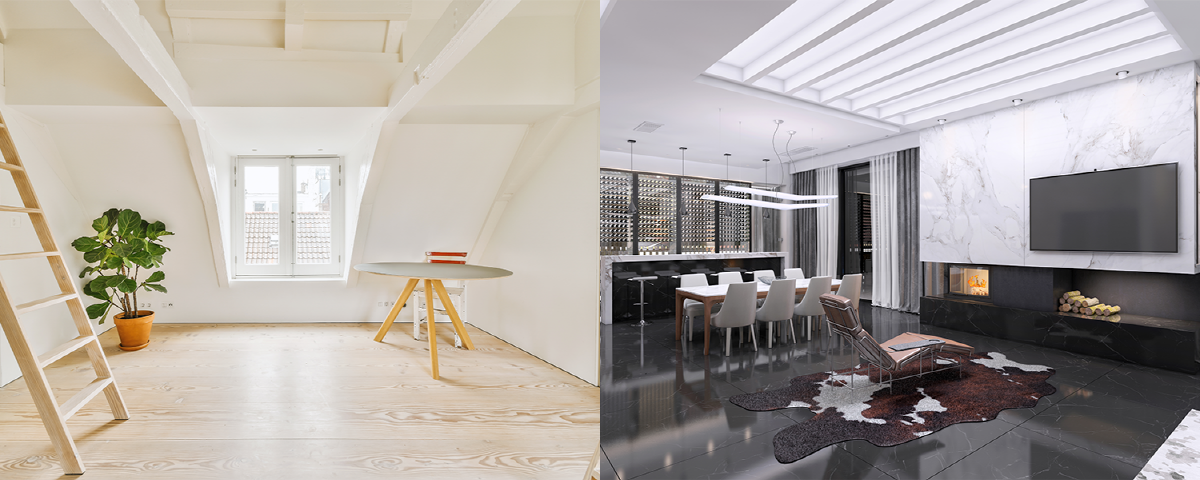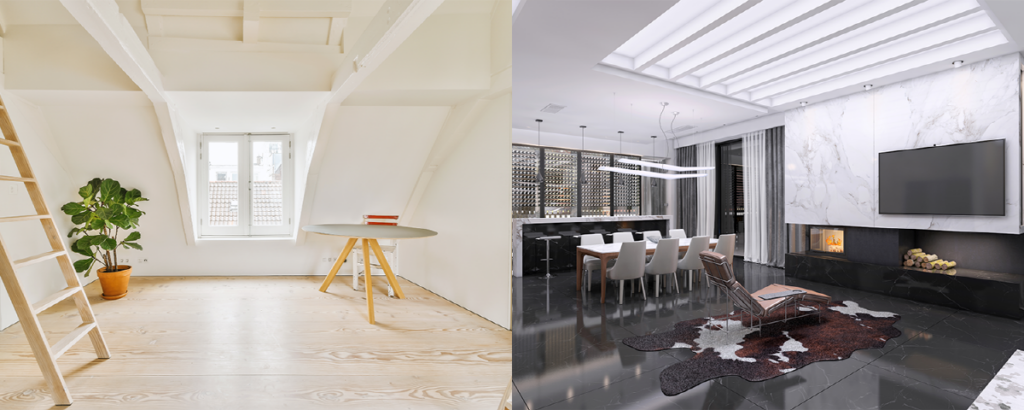
When choosing the right flooring for their home, people often need help deciding between vinyl flooring and ceramic tiles. While both have excellent qualities that can make them a great choice for any homeowner, this article will give a brief overview of the difference between vinyl flooring and ceramic tiles and then explain why vinyl flooring is the superior option.
What’s the difference between vinyl flooring and tile?
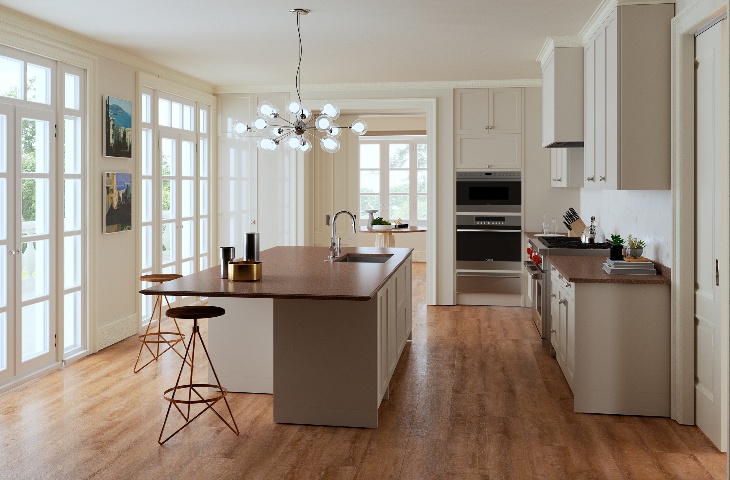
First, let’s explore the differences between vinyl flooring and ceramic tiles. Vinyl flooring is made from two kinds of reinforced plastic, fiberglass, and PVC. Vinyl flooring includes standard vinyl tiles, luxury vinyl tiles (LVTs), or longer plank formats. Regardless of the format, vinyl flooring is generally stain and water-resistant, but luxury vinyl tiles, like LX Hausys HFLOR, are thicker and more durable. Additionally, LVTs are often able to be installed without glue due a design that clicks and locks edges in place. Vinyl flooring consists of three main layers: the base, design layer, and surface layer.
Ceramic tiles are also scratch, stain, and water resistant. However, unlike synthetic vinyl flooring, ceramic tiles are made using natural earth clays that are glazed and then hardened at high temperatures, which makes them very durable. Porcelain, a subcategory of ceramic tiles uses finer clays and higher curing temperatures during the manufacturing process, making porcelain floor tiles or slabs harder, more durable, and more heat resistant than ceramic flooring.
Reasons why vinyl flooring is better than tile
There are several reasons to choose vinyl flooring over ceramic tiles for your home, including:
- Easy installation
- Water and heat resistance
- Appearance
- Durability
- Care and maintenance
- Cost
Easy installation
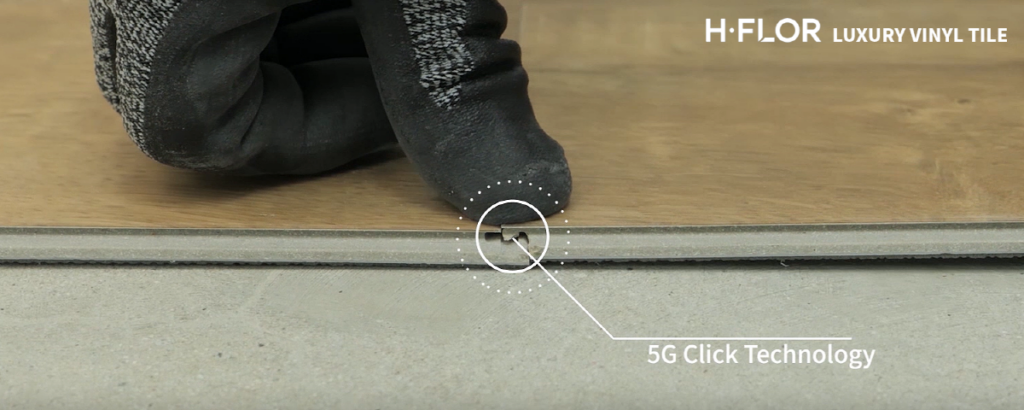
Vinyl flooring is usually easier to install compared to ceramic tiles. Many types of vinyl flooring feature a “floating floor” effect, which uses click-lock joints to connect the flooring and hold it in place. The quick locking joints of LVTs make them one of the easiest flooring solutions to install. Other types of vinyl flooring require using glue or adhesives to secure the vinyl in place; this method often requires additional work to level the subfloor before installation. For click-and-lock vinyl, your main concerns will be ensuring you have a clean and dry subfloor, and each piece is measured correctly and locked in place to avoid shifting or buckling.
By comparison, ceramic floor installations can be quite an unwieldy project. In addition to tearing out the existing floor, you must ensure that the subfloor or cement slab is level to prevent the tiles from cracking. Using a mortar adhesive, the tiles are set in place and cut with special tools, such as a wet saw, to fit the space. After that, the tiles are evenly spaced using spacers. After the adhesive has dried, the joints are filled with grout, which also needs to dry. The grouting process can be very messy, requiring corrosive chemicals, like acids and other cleaners, to complete. Fixing and replacing ceramic tiles is another challenging project, often requiring large hammers, chisels, and power tools. This process can produce large amounts of dust that isn’t easy to contain.
Water and heat resistance
Vinyl flooring is the superior option when it comes to water resistance. Ceramic tiles can be porous compared to vinyl, allowing water to seep into the tiles, especially if the grout is not properly maintained. By comparison, the surface layer of vinyl flooring is completely water-resistant. While some vinyl tiles have joints or seams like ceramic tile that could allow water to seep through, sheet vinyl flooring eliminates these gaps. Overall, sheet vinyl flooring is a better option for high-moisture environments. However, ceramic and porcelain flooring is hard to beat when it comes to heat resistance. Both ceramic and porcelain tiles require high heat during manufacturing, with porcelain undergoing higher curing temperatures than ceramic. The high-temperature curing process makes ceramic and porcelain extremely resistant to heat damage.
Appearance
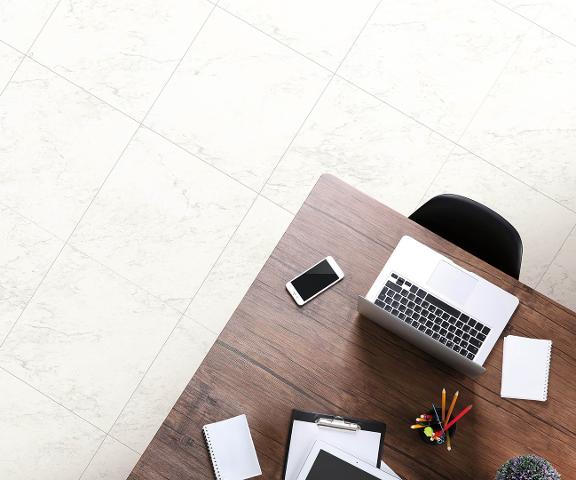
Both vinyl flooring and ceramic provide stunning visuals, with the ability to mimic the look of natural materials, including wood and stone. However, vinyl manufacturing continues to evolve and innovate, with increasingly high-resolution visuals and more realistic designs coming to market. Vinyl and ceramic are available in various colors and styles, but high-quality ceramic designs can be expensive. Additionally, styles and trends change quickly. Due to the costly nature of ceramics and its difficulty to install and remove, vinyl flooring is more cost-effective and easier to update as trends change.
Durability
While there is almost no comparison to the durability of ceramic tiles, which will last forever if properly maintained, this is also its downfall. Ceramic tiles are incredibly durable when faced with moisture and other environmental changes due to their hardness. However, this same hardness makes them inflexible and prevents them from expanding or contracting with environmental fluctuations and and impact, making this ceramic flooring more likely to crack. Fixing a damaged tile can be expensive and cumbersome, as discussed under installation. By comparison, vinyl tiles are designed for high-traffic environments and commercial use. They’re flexible enough to absorb shock from dropped objects and other environmental factors, making them less likely to crack.
Care and maintenance
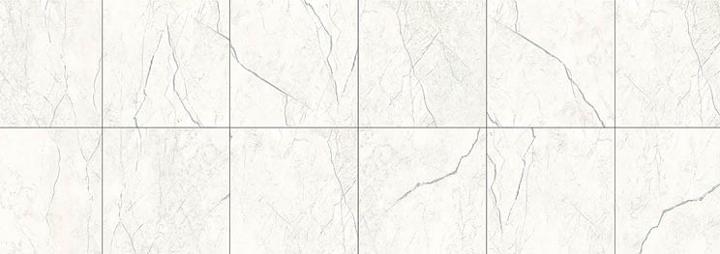
Both ceramic tiles and vinyl flooring are easy to care for and maintain, requiring you to sweep them often and periodically mop them with a cleaning solution. However, the grout between ceramic tiles can be more time-consuming as it can become stained or mildewy over time, requiring additional scrubbing and attention to detail.
Cost
As always, pricing can vary based on the quality of the material you are using. However, vinyl flooring is usually significantly cheaper than ceramic tile. Luxury vinyl tiles typically cost between $4 to $7 per square foot, while ceramic tiles cost $5 to $20 per square foot. These are just the material costs and do not include professional installation, which can be twice as expensive for ceramic.
Conclusion
Vinyl flooring has many significant benefits over ceramic tiles, from its affordability to its appearance and ease of installation. If you are looking for an affordable, high-quality vinyl flooring solution, look no further than LX Hausys’ HFLOR LVT collection. Click here to browse the numerous options and styles available on our website.
Contact Us
Are you interested in vinyl flooring for your home? Contact us through the form on our website, and one of our experienced, knowledgeable team members will contact you shortly to assist you and answer any questions you may have.

